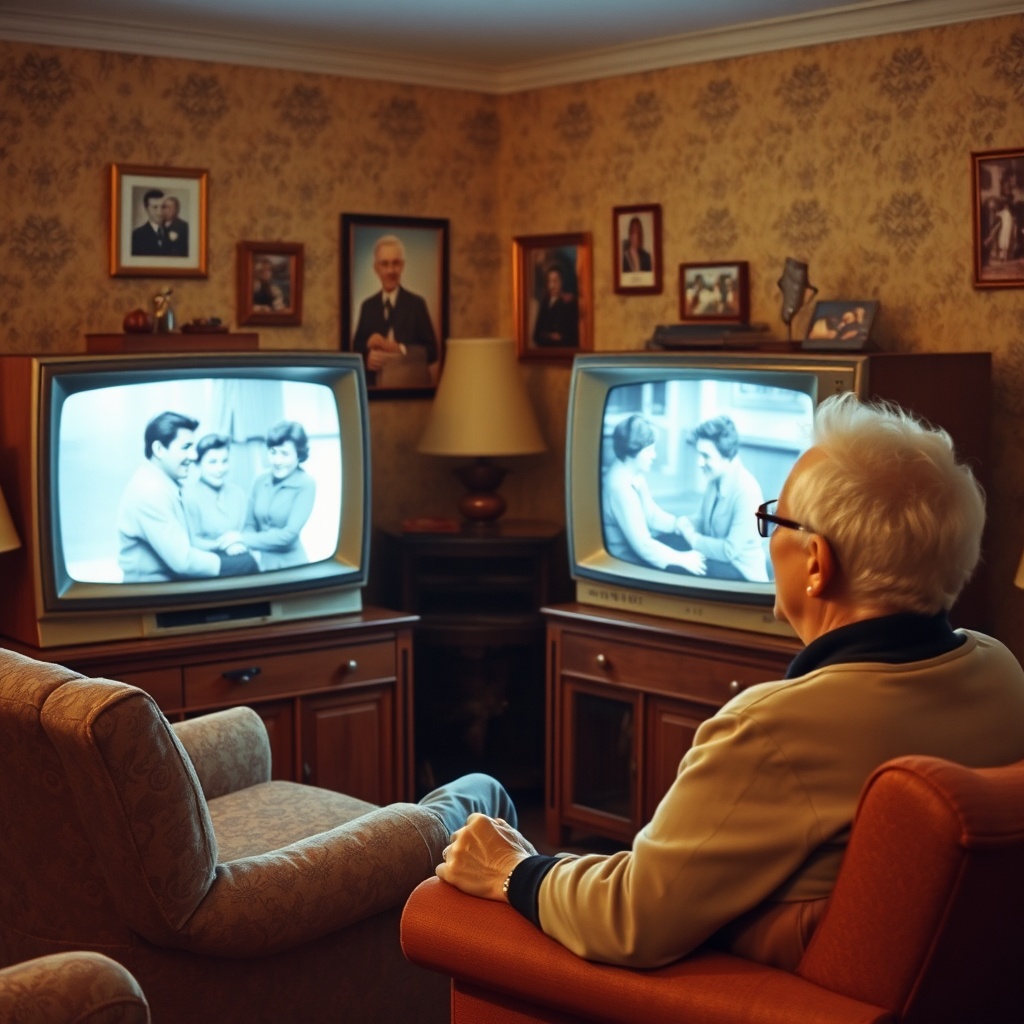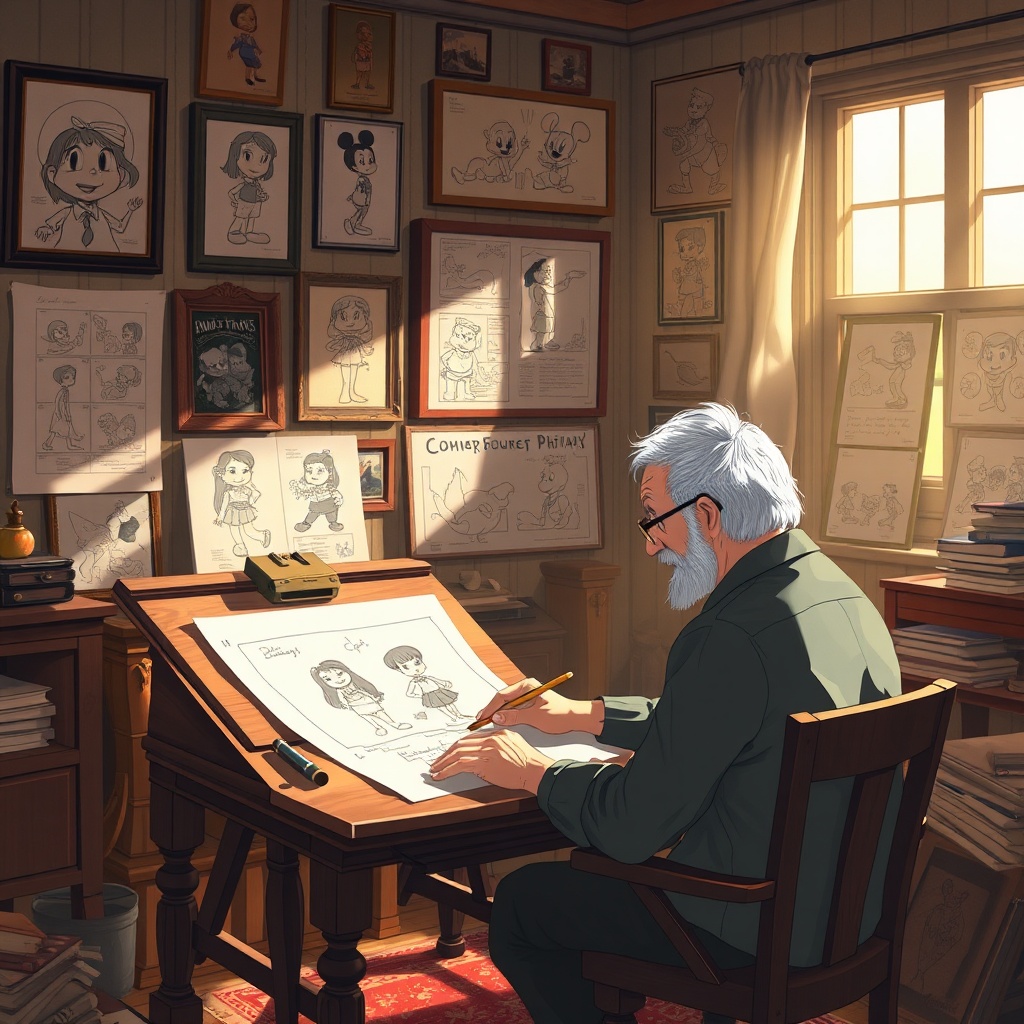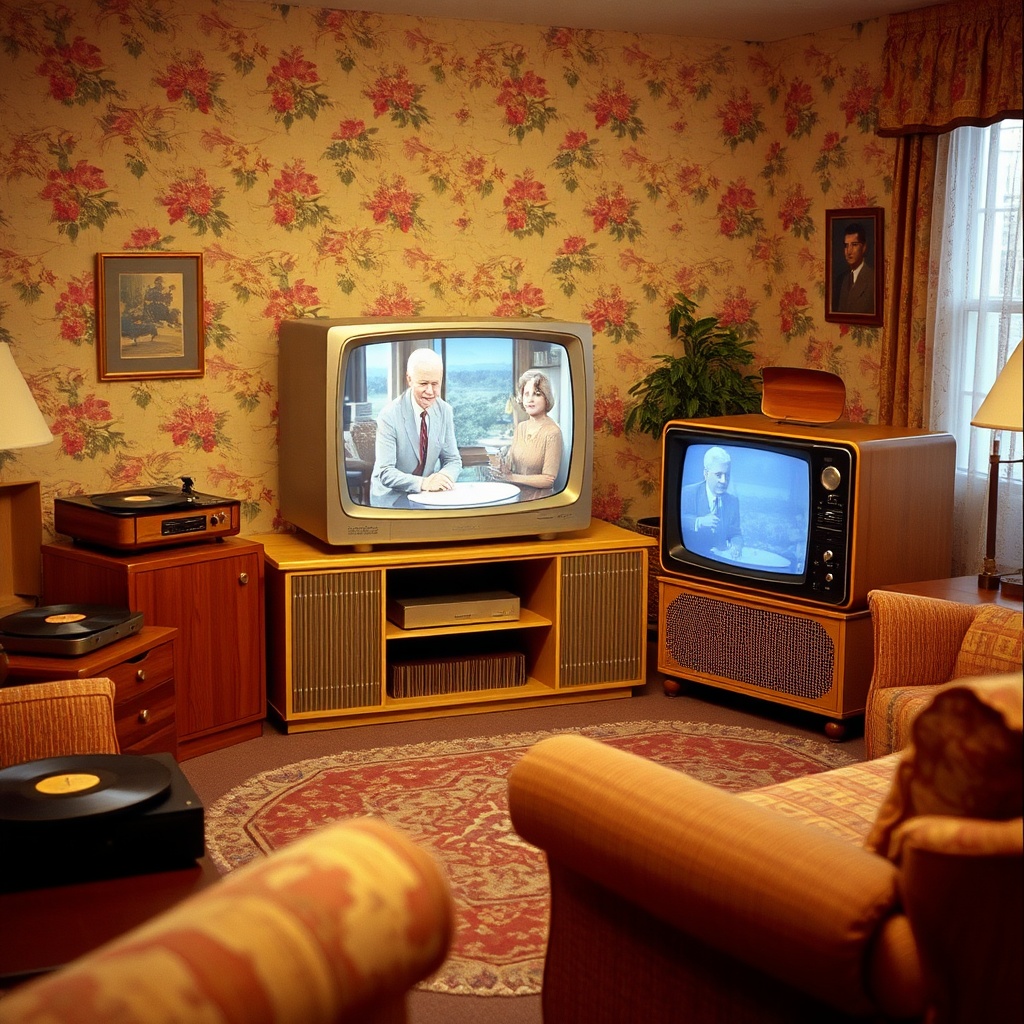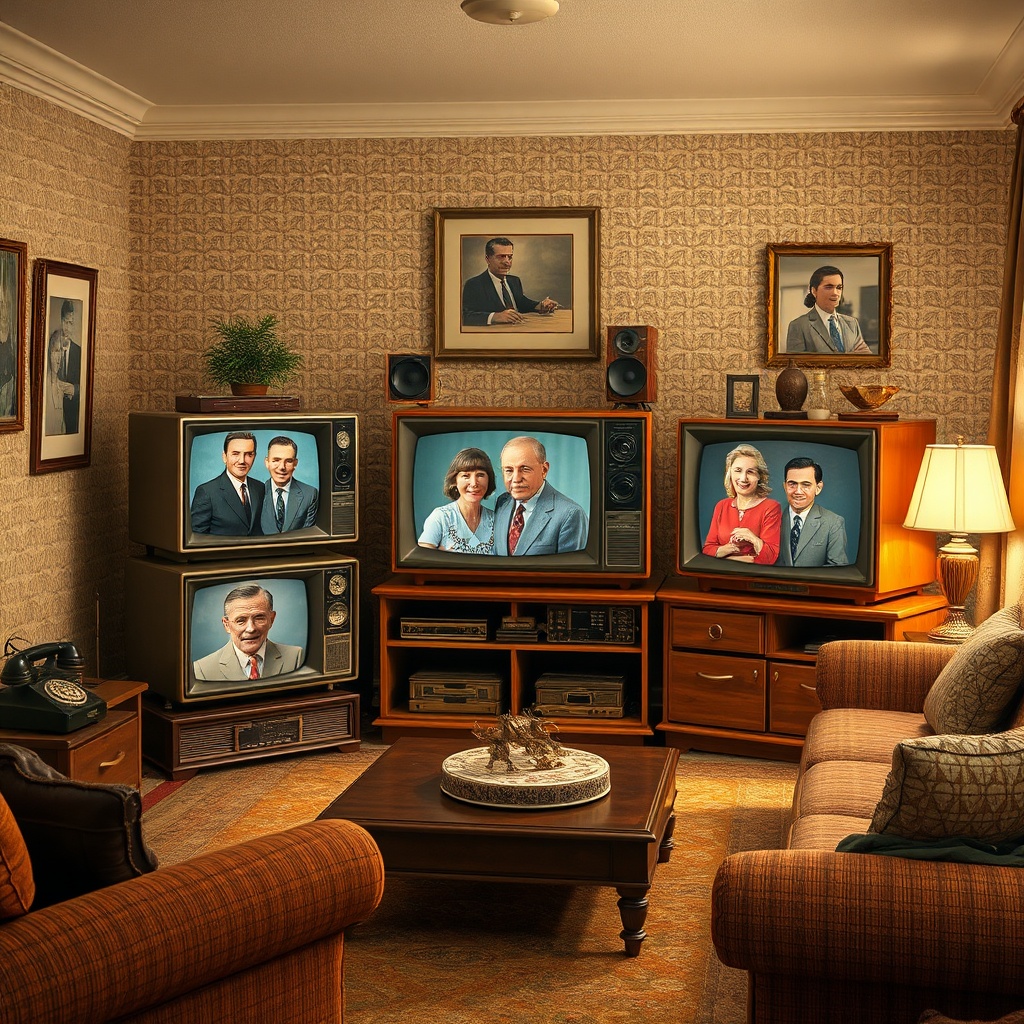Reliving the Golden Era: Iconic Shows That Shaped Our Lives

Welcome to a nostalgic journey through the television shows of the 1960s, a decade that truly defined modern entertainment. This was a time when families gathered around the television, sharing laughter, tears, and unforgettable moments. Let’s explore some of the iconic shows that not only entertained us but also shaped our lives.
1. The Andy Griffith Show
This beloved sitcom brought the charming town of Mayberry to life. With its gentle humor and relatable characters, it provided a sense of community and simplicity.
- Main Characters: Andy Taylor, Barney Fife, Opie Taylor
- Themes: Friendship, Morality, Small-town Values
2. I Love Lucy
A pioneer in television history, Lucy Ricardo’s hilarious antics and her dynamic with husband Ricky brought joy to millions. The show broke barriers and set the standard for sitcoms.
- Key Moments: Chocolate Factory Episode, Vitameatavegamin
- Impact: First female producer, Paved the way for future sitcoms
3. The Twilight Zone
This anthology series took viewers on a journey into the unknown, blending science fiction, fantasy, and horror. Each episode challenged our perceptions of reality and morality.
- Notable Episodes: “Time Enough at Last”, “Nightmare at 20,000 Feet”
- Legacy: Inspired countless remakes and adaptations
4. Star Trek
Boldly going where no one had gone before, Star Trek introduced us to a future filled with exploration and diversity. The series tackled social issues with a unique lens.
- Iconic Characters: Captain Kirk, Mr. Spock, Dr. McCoy
- Messages: Unity, Tolerance, Exploration
5. The Dick Van Dyke Show
This groundbreaking sitcom showcased the life of a television comedy writer and his family, offering a perfect blend of humor and heart. Its clever writing and charismatic cast made it a favorite.
- Innovative Elements: Dream Sequences, Physical Comedy
- Notable Awards: Emmy Awards for Outstanding Comedy Series
Interactive Reflection
As you reminisce about these shows, consider the following:
- Which show brought back the fondest memories for you?
- How did these characters influence your own family values?
- What lessons from these shows do you still carry with you today?
Conclusion
The television of the 1960s was not just a source of entertainment; it was a reflection of society, culture, and the human experience. As we relive these golden moments, let’s celebrate the timeless wisdom and joy they brought into our lives.
Behind the Screen: The Visionaries Who Brought Characters to Life

Imagine for a moment the television shows of the 1960s, where vibrant characters emerged and stories unfolded in living rooms across America. Behind these beloved figures were the visionary creators, writers, directors, and producers whose ingenuity brought them to life. Let’s explore the dynamic world of these talented individuals.
The Architects of American Television
The 1960s was a golden era for television, and at the heart of this revolution were a few key figures who shaped the landscape. These pioneers not only created characters but also influenced culture and society. Here are some notable visionaries:
| Name | Show | Contribution |
|---|---|---|
| Rod Serling | The Twilight Zone | Creator and writer known for his thought-provoking narratives and social commentary. |
| Desi Arnaz | I Love Lucy | Pioneered the sitcom format and was instrumental in the development of multi-camera filming. |
| Garry Marshall | Happy Days | Creator and producer who captured the essence of American teenage life. |
| Mary Tyler Moore | The Dick Van Dyke Show | Actress and producer who broke gender stereotypes in television. |
Crafting Memorable Characters
These visionaries understood that characters are the heart of any story. They crafted personalities that resonated deeply with audiences, often reflecting societal issues and personal struggles. Think about your favorite characters from this era:
Lucy Ricardo – A comedic genius who embodied the spirit of the 1950s housewife.
Hawkeye Pierce – A witty surgeon who brought humor to the realities of war in M*A*S*H.
Captain James T. Kirk – The brave leader of the USS Enterprise, representing exploration and adventure.
Influencing Generations
The impact of these creators extends beyond their shows. Many of their characters have become cultural icons, influencing societal norms and expectations. Their work not only entertained but also educated and inspired viewers. Reflect on how these shows shaped your own views and experiences.
Join the Conversation
As we celebrate these patriarchs of television, consider sharing your memories. What shows did you cherish? Which character inspired you the most? Engage with friends and family to reminisce about the stories that shaped your lives.
Timeless Tales: How 1960s Television Reflected Our Values

Step back into the 1960s, a decade where television became a mirror reflecting the society of its time. The shows that graced our screens were not just entertainment; they were narratives interwoven with the ethos of the era.
The Power of Family
As you recall your favorite sitcoms, how often did they center around family dynamics? The 1960s brought forth iconic families like the Cleavers from Leave It to Beaver and the Andrews from Father Knows Best. These shows portrayed the idealized American family, where values of respect, love, and understanding were paramount.
Social Commentary Through Comedy
While many shows aimed to entertain, they also provided sharp commentary on societal values. The Dick Van Dyke Show and All in the Family tackled issues such as gender roles and racial tensions with humor and insight. Did you find yourself laughing while also contemplating deeper societal issues?
Courage to Address Change
The 1960s were a time of significant change, and television wasn’t shy about addressing it. Shows like Star Trek introduced viewers to a diverse cast, promoting messages of unity and acceptance. How did these portrayals influence your views on diversity and equality?
Role Models for Generations
Characters such as Hawkeye Pierce from M*A*S*H and Mary Richards from The Mary Tyler Moore Show became role models for many. They embodied resilience, independence, and a strong sense of morality. Can you recall a moment when a character inspired you to embrace a certain value?
The Influence of News and Documentaries
Television news programs began to shape public opinion, bringing the realities of the world into living rooms. Walter Cronkite became a trusted voice, delivering news that shaped the national dialogue. How did the news coverage of the 1960s impact your understanding of world events?
Conclusion: A Lasting Legacy
As we reflect on the television of the 1960s, it is clear that these shows did more than entertain; they shaped our values and perspectives. They encouraged conversations about family, diversity, and social justice. Which show or character from the 1960s do you feel had the most profound impact on your life?
Engagement
Share your thoughts and memories! How did the themes of the 1960s resonate with your own experiences? Your stories are part of the rich tapestry of television history.
Memorable Moments: The Episodes That Made Us Laugh and Cry
Television in the 1960s was not just a medium for entertainment; it was a cultural phenomenon that brought families together. From heartfelt moments to hilarious antics, the patriarchs of this golden age of television delivered episodes that resonated with audiences and left lasting impressions. Let’s take a trip down memory lane and explore some of the most memorable moments that made us laugh and cry.
1. The Humor of Family Dynamics
Show: Leave It to Beaver
Episode: “Beaver’s First Date”
This episode captured the innocence of adolescence and the often awkward experience of first dates. Beaver’s attempts to impress his date, while inadvertently causing chaos, had audiences laughing at the relatable humor of growing up.
2. The Heartfelt Lessons
Show: The Andy Griffith Show
Episode: “Opie’s Charity”
In this touching episode, Opie learns the value of generosity and kindness. The emotional depth showcased in this story tugged at the heartstrings of viewers, highlighting the importance of community and compassion.
3. The Classic Family Conflicts
Show: The Dick Van Dyke Show
Episode: “The Sick Boy and the Sitter”
Featuring Rob and Laura’s hilarious misunderstandings, this episode reminds us of the comedic chaos that ensues within a loving marriage. The laughter it provided was balanced beautifully with the underlying warmth of their relationship.
4. The Impact of Loss
Show: Bonanza
Episode: “The Price of Salt”
This episode dealt with themes of loss and grief as the Cartwright family faces the challenges of life on the ranch. It resonated deeply with viewers, showcasing the strength of familial bonds in times of hardship.
5. The Joy of Friendship
Show: Happy Days
Episode: “The Fonzie Scheme”
With laughter and camaraderie, this episode highlighted the importance of friendship and loyalty. The antics of Fonzie and his friends left audiences smiling, reminding them of the joy that comes from strong friendships.
6. The Wisdom of Elders
Show: The Waltons
Episode: “The Thanksgiving Story”
This heartfelt episode illustrates the value of family traditions and the wisdom passed down through generations. The warmth of the Walton family gatherings brought tears to many viewers, encapsulating the essence of love and gratitude.
The television shows of the 1960s offered more than just entertainment; they provided a mirror to our lives, filled with laughter and tears. These memorable moments continue to echo in our hearts, reminding us of the lessons learned and the joy experienced. As we celebrate these patriarchs of television, let us cherish the laughter and the tears that shaped our understanding of family and friendship.
Legacy of Laughter: The Comedians Who Redefined Humor on TV
The Golden Age of Television Comedy
The 1960s was a transformative decade for television, especially in the realm of comedy. As you reminisce about the laughter that filled your living rooms, let’s explore the iconic comedians who not only made us laugh but also shaped the very essence of humor on TV.
The Pioneers of Laughter
Think back to those unforgettable moments when the television screen came alive with laughter. Here are some of the legends who stood at the forefront:
- Lucille Ball: The queen of comedy, known for her role in I Love Lucy, Lucille’s impeccable timing and physical comedy set a high bar for future generations.
- George Burns: With his trademark cigar and wit, Burns brought charm and humor to the stage, proving that laughter only gets better with age.
- Bob Hope: A master of one-liners, Hope entertained millions with his sharp humor and charisma, becoming a staple in American entertainment.
- Carol Burnett: Known for her groundbreaking variety show, Burnett’s ability to connect with audiences through her sketches and characters made her a beloved figure.
Innovations in Humor
These comedians didn’t just make us laugh; they revolutionized the way humor was presented on television. Let’s take a closer look at their contributions:
- Sketch Comedy: Programs like Rowan & Martin’s Laugh-In introduced rapid-fire jokes and sketches that kept audiences on their toes.
- Social Commentary: Comedians like Mort Sahl used humor to address pressing social issues, paving the way for future comedians to blend comedy with activism.
- Character-Driven Comedy: The development of memorable characters by performers like Gilda Radner in SNL added depth to comedic storytelling.
Engaging with the Past
Reflect on your favorite moments from these shows. Which sketches or characters brought you the most joy? Perhaps you remember gathering around the TV with family, sharing laughter over the antics of your beloved comedians.
The Enduring Legacy
The influence of 1960s television comedians is still felt today. Their ability to evoke laughter, provoke thought, and bring people together is a testament to their talent. As we celebrate these patriarchs of humor, we invite you to continue sharing their legacy with younger generations.
What are your thoughts on the comedians who shaped your youth? Share your stories and favorite moments, and let’s keep the laughter alive!
Cultural Shifts: How 1960s TV Influenced Society and Culture
The 1960s was a transformative decade, not just in the realm of politics and social movements, but also in the television landscape. Let’s delve into how this era’s television programming shaped cultural norms and societal values.
Television as a Reflection of Society
Television in the 1960s wasn’t just entertainment; it was a mirror reflecting the changing dynamics of society. Shows like Star Trek and The Dick Van Dyke Show introduced audiences to new ideas, breaking away from traditional norms.
Questions to ponder:
- How did the portrayal of diverse characters in these shows challenge stereotypes?
- Can you recall a moment from a 1960s show that changed your perspective on social issues?
Embracing Diversity
The decade saw the emergence of more diverse characters on screen. The Jeffersons and Julia showcased African American families in a positive light, a significant shift from previous portrayals.
Consider this:
- What impact did these shows have on your understanding of race and community?
- Did these representations influence your friendships or interactions with others?
Political and Social Commentary
Many 1960s television programs tackled pressing political issues. All in the Family addressed topics like racism, feminism, and the Vietnam War, allowing viewers to engage with controversial subjects in a relatable way.
Reflect on:
- What lessons did you take away from the social issues portrayed in these shows?
- How did these discussions shape your views on politics and society?
Women’s Changing Roles
The portrayal of women also evolved during this decade. Characters like Mary Richards from The Mary Tyler Moore Show represented a new breed of independent women, challenging the norms of femininity.
Ask yourself:
- How did these portrayals inspire you or the women in your life?
- Did you notice a change in your own or others’ expectations of women during this time?
The 1960s television landscape was not just about entertainment; it was a catalyst for societal change. As we reminisce about this golden era, we can appreciate the profound influence it had on shaping our cultural identity.
Final thoughts:
- What lasting impacts do you think these shows had on today’s television?
- How do you believe the legacy of 1960s TV continues to resonate in modern culture?
The Art of Storytelling: Unforgettable Narratives That Captivated Generations
The Power of Storytelling
From the dawn of television, storytelling has been at the heart of every captivating show. In the 1960s, a unique blend of creativity and societal reflection emerged, shaping narratives that resonated deeply with viewers. What stories do you remember most?
Defining Moments in 1960s Television
Television in the 1960s was a canvas for groundbreaking narratives. Shows like The Twilight Zone and Star Trek introduced audiences to new worlds and ethical dilemmas. Each episode was a journey, often reflecting the societal issues of the time.
- The Twilight Zone: A series that explored the unknown, challenging viewers to ponder morality and humanity.
- Star Trek: A vision of the future, promoting diversity and cooperation among different species.
- Bonanza: A family drama set in the Wild West, showcasing themes of loyalty, love, and conflict.
Characters That Stood Out
Characters from these shows became icons, embodying values and struggles relatable to many. Which character left a lasting impression on you?
- Rod Serling: The creator and host of The Twilight Zone, known for his thought-provoking narratives.
- Captain James T. Kirk: A symbol of leadership and courage in Star Trek.
- Ben Cartwright: The patriarch of the Cartwright family in Bonanza, exemplifying strength and wisdom.
Lessons Learned from the Narratives
Every story told in the 1960s television era carried a lesson. Whether it was about acceptance, resilience, or the quest for justice, these narratives shaped the perspectives of an entire generation. What lessons did you take away from your favorite shows?
As we reminisce about these unforgettable narratives, it’s essential to engage with the past actively. Consider sharing your stories with younger generations. How can you pass on these tales of wisdom?
Conclusion: The Legacy of Storytelling
The art of storytelling in 1960s television is a rich tapestry of narratives that continue to resonate today. These stories not only entertained but also offered lessons that remain relevant. What is your favorite memory from these shows?
Fashion and Fame: Iconic Styles That Defined Television Stardom
The 1960s was a transformative decade for television, marked not only by groundbreaking stories and characters but also by the striking fashion choices that defined an era. Let’s take a nostalgic walk down memory lane and explore the iconic styles that made television stars unforgettable.
Classic Styles That Captivated Audiences
Television in the 1960s was more than just a source of entertainment; it was a cultural phenomenon. The characters we loved were often adorned in styles that reflected the zeitgeist of the time. Here are some of the most memorable fashion trends:
- Mod Fashion: The Mod movement brought bold colors, geometric patterns, and a sense of youthful rebellion. Shows like The Dick Van Dyke Show showcased this style, with characters often seen in vibrant suits and elegant dresses.
- Classic American Casual: Shows like Leave It to Beaver presented a vision of the ideal American family, often featuring clean-cut styles. Think button-up shirts, neatly pressed trousers, and sweet, wholesome dresses.
- Glamorous Evening Wear: The stars of Bewitched and I Love Lucy dazzled audiences with their elegant evening gowns and sophisticated suits, representing a more glamorous side of television.
Legendary Icons of the Era
Several stars became synonymous with their styles, influencing generations to come. Let’s take a closer look at some of these legendary figures:
- Lucille Ball: Known for her comedic genius, her vibrant red hair and bold outfits made her a fashion icon. Lucy’s style was often colorful and expressive, reflecting her larger-than-life personality.
- Dick Van Dyke: With his suave looks and impeccable fashion sense, Van Dyke became a staple of 60s television. His tailored suits and charming smile were unforgettable.
- Mary Tyler Moore: As Laura Petrie, she challenged traditional styles with her chic, modern outfits, paving the way for women’s fashion on television.
As you think back to your favorite shows from the 1960s, consider these questions:
- Which character’s style resonated with you the most?
- How did the fashion of that time influence your own wardrobe choices?
- What memories do you associate with watching these shows and their iconic fashion?
Fashion in the 1960s was not just about clothes; it was a reflection of social change and cultural values. The styles we saw on television helped shape our perceptions of beauty, identity, and even aspiration. As we celebrate these patriarchs of television, let us remember the impact of their fashion statements that continue to echo through the decades.
Voices of Change: How Television Pioneered Social Movements
The Power of Television in the 1960s
During the 1960s, television emerged as a revolutionary medium, shaping public opinion and igniting social movements. Can you recall the first time you saw a pivotal moment on your screen? Television was not just entertainment; it became a powerful voice for change.
Reflecting Society’s Issues
Shows began to address pressing social issues, from civil rights to gender equality. Do you remember the impactful narratives that encouraged dialogue? Programs like All in the Family and The Dick Van Dyke Show challenged societal norms, inviting audiences to reflect on their beliefs.
Iconic Moments That Changed Perspectives
Think about the march on Washington in 1963. Millions watched as Dr. Martin Luther King Jr. delivered his historic “I Have a Dream” speech. What feelings did that evoke in you? Television brought such moments into our living rooms, transforming them into shared experiences.
Television as a Catalyst for Social Movements
Programs like The Ed Sullivan Show introduced audiences to artists and activists, bridging cultural gaps. How did these performances make you feel? They inspired a generation to rally for change, demonstrating that television could amplify voices often unheard.
Engaging the Audience
Interactive shows like Sesame Street not only entertained but educated. It was a new way to engage children and families in social issues. Did you watch it with your family? These programs instilled values of acceptance and understanding, shaping young minds to be more socially aware.
Legacy of 1960s Television
The legacy of the 1960s television era is profound. It paved the way for future generations, proving that media could be a force for good. What shows or moments from that era resonate with you today? Reflecting on these memories can remind us of the power of unity and change.
A Nostalgic Journey: Revisiting Our Favorite Shows and Their Impact
Remembering the Golden Age of Television
As we reflect on the 1960s, a decade that shaped the landscape of television, we invite you to join us on a nostalgic journey through some of the most beloved shows of our youth. Can you recall the moments when you gathered around the television set, eagerly anticipating the next episode of your favorite series? Each show not only entertained us but also imparted valuable lessons and cultural insights.
The Timeless Classics
Think back to iconic shows like Star Trek, where the adventures of Captain Kirk and the crew aboard the USS Enterprise inspired us to dream of the stars. Or perhaps The Andy Griffith Show, a heartwarming portrayal of small-town life that taught us about kindness, community, and the importance of family. What memories do you have of these shows? Share your thoughts!
The Cultural Impact
The 1960s were a transformative time in America, and television played a pivotal role in reflecting and shaping societal values. Shows like Bewitched introduced us to the concept of female empowerment through the character of Samantha, a witch who juggled family life with her magical abilities. How did shows like this influence your views on gender roles and relationships during that era?
Now, let’s take a moment to engage. Close your eyes and picture your living room back then. What was your favorite show? Who did you watch it with? What snacks were a must-have? Your memories are a treasure trove of stories waiting to be shared. Why not jot them down or discuss them with friends?
Legacy of the Patriarchs
The patriarchs of 1960s television were not just actors; they were cultural icons. Their performances left an indelible mark on our hearts and minds. Characters like Hugh Beaumont as Ward Cleaver in Leave It to Beaver embodied the ideal father figure, teaching us about responsibility, integrity, and love. How did these characters influence your understanding of family? What lessons did you carry into your own life?
Conclusion: Celebrating Our Roots
As we celebrate the legacy of these shows and their characters, it’s important to acknowledge how they shaped our perspectives and values. The echoes of wisdom from the 1960s continue to resonate in our lives today. Let’s cherish these memories and pass on the lessons learned to future generations. What will you share with them?
